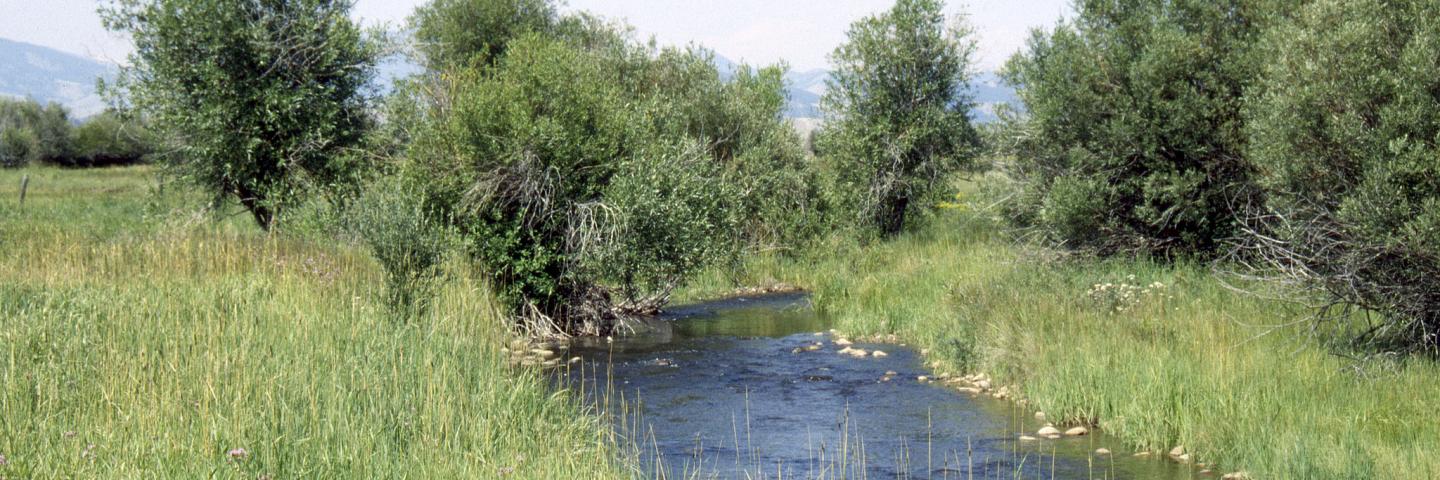
Learn how the National Water Quality Initiative is working across the country.
The National Water Quality Initiative (NWQI) is focusing conservation efforts across the country to improve water quality in watersheds across the country. These strategic investments by NRCS and conservation partners are leading to possible outcomes.
Here are a few examples of how NWQI is working across the country:
Iowa – Walk Lake Inlet (part of Black Hawk Lake)
NRCS is working with agricultural producers to implement practices to prevent phosphorus and sediment from washing into Black Hawk Lake. This work is improving water quality, and NRCS has a goal to remove the lake from the Iowa 303(d) Impaired Waters List for algae and turbidity. These voluntary efforts by producers are important because more than 146,000 visitors use Black Hawk Lake for recreational activities annually, which generates about $19 million per year to the community.
NRCS, conservation partners and producers are making tremendous progress in meeting the 30-year milestones set by the Watershed Management Plan. So far, producers have installed conservation practices that have annually reduced sediment runoff by 1,630 tons and phosphorus by 3,544 pounds.
Acres of Conservation Systems: 8,100 acres (2012-2015)
Our Investment: $1 million (2012-2015)
Louisiana – Big Creek and East Fork Big Creek
NRCS is working with agricultural producers to implement practices to prevent nutrients and pathogens from washing into Big Creek and East Fork Big Creek, two waterways that cut through a landscape dominated by dairy farms. This work is improving water quality, and NRCS has a goal to remove the two segments from the Louisiana 303(d) Impaired Waters List. The creeks are part of the Lake Pontchartrain basin, a recreational and economic hub for southeastern Louisiana.
NRCS is targeting work to where it’s needed most, and the voluntary work of producers is paying off. Three-fourths of the dairy operations in the watersheds have adopted conservation systems, and following a series of tests that have shown improvements in water quality, the two creeks are on track for delisting.
Acres of Conservation Systems: 1,600 acres (2012-2015)
Our Investment: $1.4 million (2012-2015)
Ohio – East Branch South Fork Sugar Creek
NRCS is working with agricultural producers to implement practices to prevent nutrients and sediment from washing into East Branch South Fork Sugar Creek, one of Ohio’s most degraded watersheds. The creek cuts through croplands and pasturelands. NRCS is working to improve water quality with a goal to reduce loadings by 30 percent and remove the segment from the Ohio 303(d) Impaired Waters List.
NRCS is targeting work to where it’s needed most. Eight farms make up 75 percent of the agricultural land in the watershed. Through NWQI, NRCS and the Tuscarawas Soil and Water Conservation District are working with these eight farms to implement a variety of conservation practices, such as building waste storage facilities, putting roofs over animal lots and manure storage areas, and planting cover crops.
Acres of Conservation Systems: 3,000(2012-2015)
Our Investment: $800,000 (2012-2015)
Vermont – Rock River
NRCS is working with agricultural producers to implement practices to prevent nutrients and sediment from washing into Rock River, which eventually flows into Lake Champlain. This work is improving water quality, and NRCS has a goal to remove parts of the river from the Vermont 303(d) Impaired Waters List. Lake Champlain suffers from toxic algae blooms, and work in this tributary is part of a larger state-federal effort to improve the lake’s quality.
NRCS is targeting work to where it’s needed most, and so far, producers have adopted conservation crop rotation on 130 acres, reduced tillage on 75 acres of reduced tillage, cover crops on 1,363 acres. NRCS has worked with producers to plan for more than 1,100 acres in the future.
Acres of Conservation Systems: 1,900 (2012-2015)
Our Investment: $580,000 (2012-2015)



